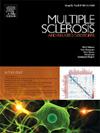2024年修订的多发性硬化症麦当劳标准的诊断率:来自埃及队列的见解。
IF 2.9
3区 医学
Q2 CLINICAL NEUROLOGY
引用次数: 0
摘要
背景:2024年修订的多发性硬化症(MS)麦克唐纳诊断标准纳入了新的生物标志物和地形,以提高MS诊断的敏感性和特异性。这些变化是否能提高临床实践的诊断率仍有待确定,特别是在获得高级调查的机会有限的地区。目的:评估2017年和2024年麦当劳标准在埃及多发性硬化症队列中的诊断率和一致性。方法:在本横断面研究中,连续197例疑似脱髓鞘疾病患者根据2017年和2024年麦当劳标准进行分类。对MS诊断比例、标准间一致性(Cohen’s κ)和不一致性(McNemar’s test)进行总体和亚组(年龄、临床表现、MRI病变形貌)评估。结果:2017年标准确定了168例MS病例,而2024年标准确定了195例,多诊断了27例患者(+ 13.7%)。一致性较低(κ = 0.112), McNemar检验证实显著不一致(p < 0.001)。结论:2024年McDonald标准显著提高了MS的诊断率,特别是在年轻患者、典型临床表现和MRI病变负担有限的患者中,但与2017年版本的一致性较低。这些发现支持其在临床实践中的应用,同时强调在非典型或老年患者中需要前瞻性验证和仔细解释。本文章由计算机程序翻译,如有差异,请以英文原文为准。
Diagnostic yield of the revised 2024 McDonald's criteria for multiple sclerosis: Insights from an Egyptian cohort
Background
The 2024 revision of the McDonald diagnostic criteria for multiple sclerosis (MS) incorporate novel biomarkers and topographies to enhance MS diagnostic sensitivity and specificity. Whether these changes improve diagnostic yield in clinical practice remains to be determined, particularly in regions with limited access to advanced investigations.
Objectives
To evaluate the diagnostic yield and agreement between the 2017 and 2024 McDonald criteria in an Egyptian MS cohort.
Methods
In this cross-sectional study, 197 consecutive patients presenting with suspected demyelinating disease were classified according to both the 2017 and 2024 McDonald criteria. The proportion of MS diagnoses, inter-criteria agreement (Cohen’s κ), and discordance (McNemar’s test) were assessed overall and within subgroups (age, clinical presentation, MRI lesion topography).
Results
The 2017 criteria identified 168 MS cases, whereas the 2024 criteria identified 195, diagnosing 27 additional patients (+13.7 %). Agreement was low (κ = 0.112), with McNemar’s test confirming significant discordance (p < 0.001). Subgroup analyses showed additional cases mainly in patients <50 years (+27 cases, κ = 0.111, p < 0.001) and in those with typical presentations (+26 cases, κ = 0.116, p < 0.001). No differences were observed in patients ≥50 years or with atypical presentations (κ = 1.0, complete concordance). By MRI topography, the largest gain occurred in patients with 4–5 topographies (+27 cases, κ = 0.111, p < 0.001). Key contributors included four topographies without DIT (74.1 %) and optic nerve inclusion (51.9 %).
Conclusion
The 2024 McDonald criteria substantially increase MS diagnostic yield, especially in younger patients, typical clinical presentations, and those with limited MRI lesion burden, but demonstrate low concordance with the 2017 version. These findings support their application in clinical practice, while highlighting the need for prospective validation and careful interpretation in atypical or older patients.
求助全文
通过发布文献求助,成功后即可免费获取论文全文。
去求助
来源期刊

Multiple sclerosis and related disorders
CLINICAL NEUROLOGY-
CiteScore
5.80
自引率
20.00%
发文量
814
审稿时长
66 days
期刊介绍:
Multiple Sclerosis is an area of ever expanding research and escalating publications. Multiple Sclerosis and Related Disorders is a wide ranging international journal supported by key researchers from all neuroscience domains that focus on MS and associated disease of the central nervous system. The primary aim of this new journal is the rapid publication of high quality original research in the field. Important secondary aims will be timely updates and editorials on important scientific and clinical care advances, controversies in the field, and invited opinion articles from current thought leaders on topical issues. One section of the journal will focus on teaching, written to enhance the practice of community and academic neurologists involved in the care of MS patients. Summaries of key articles written for a lay audience will be provided as an on-line resource.
A team of four chief editors is supported by leading section editors who will commission and appraise original and review articles concerning: clinical neurology, neuroimaging, neuropathology, neuroepidemiology, therapeutics, genetics / transcriptomics, experimental models, neuroimmunology, biomarkers, neuropsychology, neurorehabilitation, measurement scales, teaching, neuroethics and lay communication.
 求助内容:
求助内容: 应助结果提醒方式:
应助结果提醒方式:


